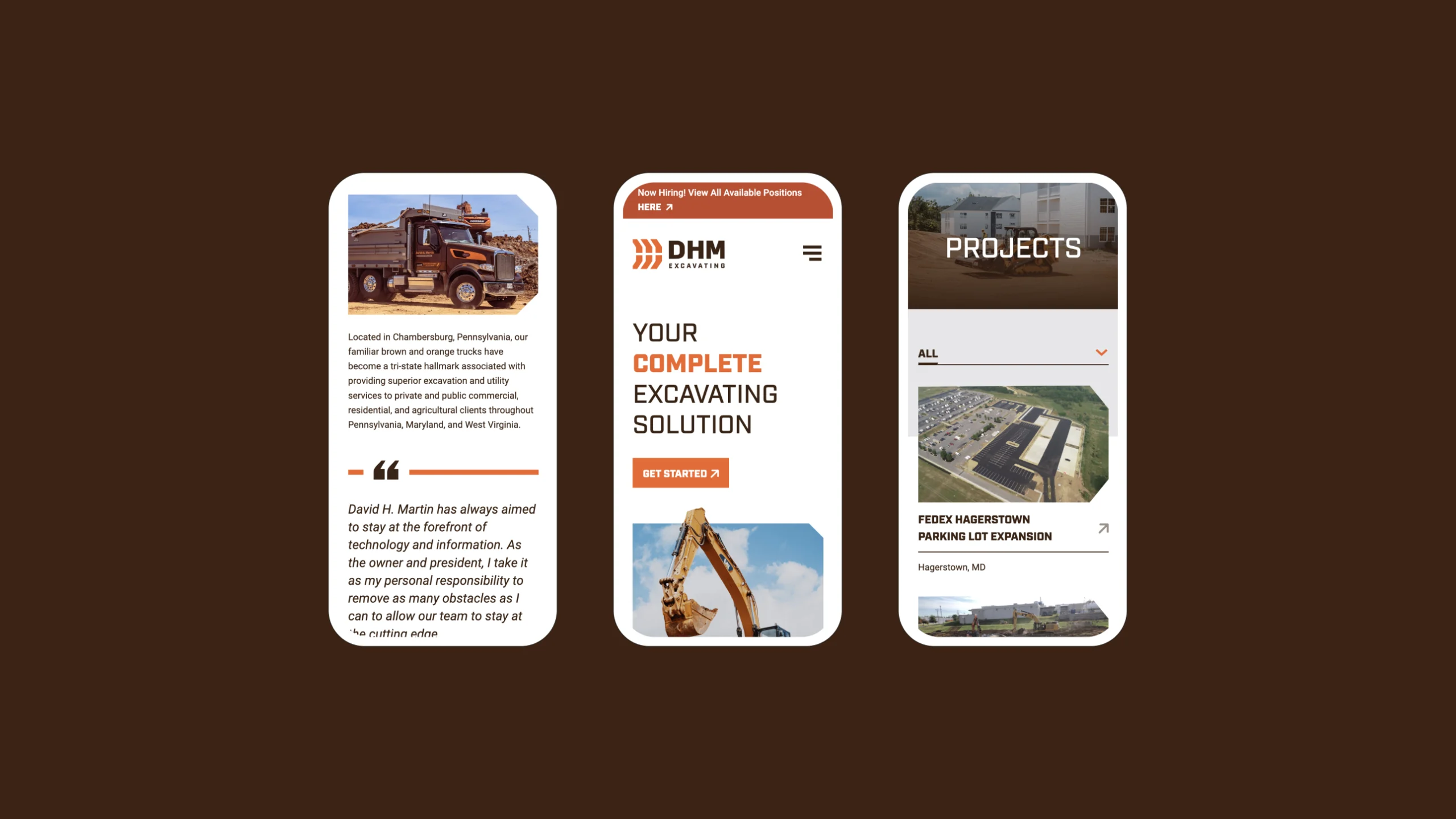A staggering 87% of consumers now start their search for services online, which shows the importance of a strong digital presence for construction companies. In an industry where trust and professionalism are paramount, web design for construction companies plays an integral role in attracting clients and building credibility. A well-designed site does more than look good—it builds trust, attracts clients, and drives business growth.
Web design focuses on creating functional, user-friendly platforms that reflect professionalism and credibility. Clients expect easy navigation, clear calls to action, and visually compelling content that showcases expertise. Let’s explore the elements that make these websites truly successful.
The Essential Functionality of Construction Websites
Functionality is the backbone of effective web design for construction companies. Visitors should be able to easily navigate through project galleries, service pages, and contact forms without confusion. Features such as clear call-to-action (CTA) buttons—like “Request a Quote” or “Schedule a Consultation”—streamline user interactions and encourage inquiries. For example, integrating client portals that provide real-time updates on project progress can enhance communication and demonstrate responsiveness.
Moreover, intuitive navigation ensures potential clients can access the information they need quickly. For instance, service pages can showcase offerings with detailed descriptions and visuals, while project galleries highlight craftsmanship. These elements improve user experience and position construction companies as organized and efficient professionals. A well-structured website reflects the company’s ability to manage projects effectively, which is a critical factor in winning over clients.
Read More: A Blueprint to Digital Marketing for Construction Companies
Showcasing Expertise Through Visual Content
Visual content is one of the most powerful tools for construction companies to showcase their expertise.
High-Quality Images and Videos
Studies show that articles with visuals receive 94% more views than those without. Before-and-after galleries allow potential clients to see the transformation and craftsmanship involved in projects, reinforcing the company’s capabilities.
Virtual Tours or Project Timelines
These two elements further enhance transparency and demonstrate professionalism. For example, a virtual walkthrough of a recently completed commercial building can help prospective clients envision their own projects with the company. Such visual elements differentiate construction firms from competitors while building trust through transparency.
Branding Components
Additionally, strong branding through visuals, such as consistent color schemes or logos, can create an emotional connection with visitors. Colors like blue or green often convey trust and reliability, making them ideal choices for construction websites.
Read More: 10 Reasons Why You Need a Rebranding Strategy

Trust-Building Design: Professionalism and Credibility
A professional website immediately communicates trustworthiness to potential clients. Clean layouts, modern designs, and responsive functionality are essential elements that signal credibility. For instance, displaying credentials such as licensing, certifications, or insurance prominently on the site reassures visitors that the company meets industry standards.
Partnerships with reputable suppliers or affiliations with industry organizations can further enhance credibility. Integrate client testimonials or reviews from platforms like Google Reviews directly into the website to provide social proof that builds confidence among prospective clients. Additionally, use security features such as SSL certificates to ensure data protection while signaling reliability.
Trust-building design is not just about aesthetics. It’s about creating an environment where visitors feel confident taking action, whether that’s requesting a quote or scheduling a consultation.
Read More: Best Practices: Social Media Content for Construction Companies
Mobile-First Design: Reaching Clients on the Go
With mobile devices accounting for over half of global web traffic, optimizing websites for mobile use is crucial for construction companies. A mobile-first design prioritizes essential features like service descriptions, contact forms, and project galleries for smaller screens. This approach aligns with Google’s mobile-first indexing policies, improving SEO rankings.

Construction professionals often browse websites while on-site or traveling between locations. A mobile-friendly site makes it easy to access services or contact information anytime, anywhere. Location-based searches are increasingly popular as well. This means incorporating geo-targeted keywords such as “home renovation in Dallas” can help attract local clients searching on their phones.
Fast load times are another critical factor in mobile optimization. Slow websites risk losing potential leads; research shows that 53% of users abandon sites that take longer than three seconds to load.
Read More: SEO for Construction Companies: Build a Strong Foundation
Streamlining the Client Experience: From First Visit to Conversion
A seamless user experience is key to converting website visitors into paying clients. Fast load times paired with intuitive navigation reduce frustration and make it easier for users to find what they need quickly. Simple processes for requesting quotes or consultations, such as one-click forms, can and usually do keep potential customers engaged.
Effective CTAs also play a vital role in guiding users through the sales funnel. Buttons like “Schedule Your Consultation Today” placed strategically throughout the site tend to encourage action at every stage of the journey. Contact options should also be easily accessible across all pages to minimize barriers between interest and inquiry.
Focusing on every touchpoint, from landing pages to inquiry forms, helps construction companies create an effortless path from first visit to conversion.
Read More: UX/UI 101: How User Experience Strategy Helps Improve Conversions
Web Design for Construction Companies: What Really Works?
Successful web design for construction companies combines functionality, visual content, trust-building elements, mobile optimization, and local SEO strategies. These components work together to create user-friendly platforms that attract leads and drive conversions. Construction businesses should prioritize both form and function in their web design efforts to stand out in a competitive market.
If your current website isn’t delivering results, it may be time for an upgrade. Contact Cross & Crown today to elevate your digital presence with expert web design tailored specifically for construction companies!


